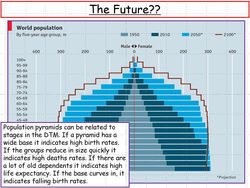
IB
|Changing Population Lesson's |
|Understanding Vocab|
|Content|
|Lessons|
|Population and Economic Development |
|Lesson 1 Course Outline |
|Lesson 2 Physical and Human Factors affecting Population Distribution |

It is important to understand the key command terms found throughout the course. Take some time to study them and understand what each command term means. Also, go through the syllabus to understand what topics and subtopics are part of the course. This will allow for greater synthesis of ideas.
Physical and human factors affecting population distribution at the global scale
Global patterns and classification of economic development:
-
low-income countries
-
middle-income countries and emerging economies
-
high-income countries
Population distribution and economic development at the national scale, including voluntary internal migration, core-periphery patterns and megacity growth
-
Two detailed and contrasting examples of uneven population distribution
Synthesis, evaluation and skills opportunities
The relative importance of different influences on where people live and spatial interactions between places at varying scales
 |  |
|---|---|
 |  |
 |
|Lesson 4 Population Distribution|
|Lesson 3 Classification of Economic Development |
|CASE STUDY|
|Lesson 5 Internal Migration |
|CASE STUDY|
|Reading/Revision & Assessment|
|HIT ME|
Take some time to look at the data. Make sure to make notes on
-
low-income countries
-
middle-income countries and emerging economies
-
high-income countries
-
Population distribution and economic development at the national scale, including voluntary internal migration, core-periphery patterns and megacity growth
|Literature Link|
|CASE STUDY|
Make sure to revise the terminology and language needed in your exam.
|HIT ME|
|Buy Now|
Factfulness allows you to see how data can be used and manipulated. It also allows you to gain a true perception of the level of development for different countries.
|Media in the Classroom|
|Understanding Population |
|Understanding Population Pyramids|
|Matthew Connelly is an American professor of international and global history at Columbia University in the city of New York.|
|Academic literature|
|Article|
|Review|
TOK

|100 people of the World what would society look like?|
|Internal Migration |
|Media in the classroom|
|2. Changing populations and places|
|Lessons|
Population change and demographic transition over time, including natural increase, fertility rate, life expectancy, population structure and dependency ratios
-
Detailed examples of two or more contrasting countries
The consequences of megacity growth for individuals and societies
-
One case study of a contemporary megacity experiencing rapid growth
The causes and consequences of forced migration and internal displacement
-
Detailed examples of two or more forced movements, to include environmental and political push factors, and consequences for people and places
Synthesis, evaluation and skills opportunities
How the impacts of population change and spatial interactions between places can be categorized and represented graphically
|Lesson 6 DTM & Contrasting Case Study |
|Lesson 7 Megacity Growth |
 |  |
|---|---|
 |  |
 |  |
|Lesson 9 Mexico City Megacity Case Study |
|Lesson 8 Migration Theories |
|Lesson 10 Two detailed examples of forced movement |
|CASE STUDY|
|Lesson 11 Mexico Migration case study|
|CASE STUDY|
|Reading/Revision & Assessment|
|Migration Has it gone too far?|
|PODCAST|
Take some time to look at the data. Make sure to make notes on
-
low-income countries
-
middle-income countries and emerging economies
-
high-income countries
-
Population distribution and economic development at the national scale, including voluntary internal migration, core-periphery patterns and megacity growth
|Migration solutions|
|Afghanistan Forced migration|
|CASE STUDY|
|Reading/Revision & Assessment|
|3. Challenges and opportunities|
|Lessons|
Global and regional/continental trends in family size, sex ratios, and ageing/greying
Policies associated with managing population change, focusing on:
-
policies related to ageing societies
-
pro-natalist or anti-natalist policies
-
gender equality policies and anti-trafficking policies
The demographic dividend and the ways in which population could be considered a resource when contemplating possible futures
-
One case study of a country benefiting from a demographic dividend
Synthesis, evaluation and skills opportunities
How population change may affect the power balance between groups of people at local, national and international scales
|Lesson 13 Ageing Population|
|Lesson 14 Anti-natalist Policy|
|Lesson 12 Trends in Family Size/ Sex ratio/ageing population |
|Lesson 14|
 |  |
|---|---|
 |  |
 |  |
|Lesson 14 Pro-natalist Policy|
|Lesson 16 Human Trafficking|
|Lesson 15 Demographic Dividend|
|Lesson 15 Gender equality|
|CASE STUDY|
|Human Trafficking|
|Ageing Population Japan|
|Gender Equality|
|Reading/Revision & Assessment|
|End of Module 1 Revision|
 |
|---|
|Case Study Cards|
|Revision Notes|
|Essays|
|Revision:Danny Dorling: Population Growth|
|Danny Dorling is a British social geographer and is the Halford Mackinder Professor of Geography of the School of Geography and the Environment of the University of Oxford |
|Practice Papers|
| | Use the Online Question-bank to answer past paper question. This is important to understand the question formation, command terms and exam structure.|


































